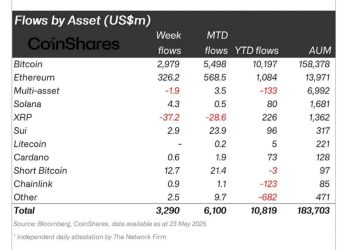A survey by Fireblocks reveals a dramatic increase in the number of firms using or planning to use stablecoins for cross-border payments and faster settlement.
Nine out of 10 top bank, fintech and crypto-native firm executives are either already using stablecoins or planning to do so, according to a new survey by digital asset infrastructure firm Fireblocks.
Making cross-border business-to-business (B2B) payments easier, faster and more transparent is the leading reason for the growing adoption.
“Stablecoins are reshaping how value moves across borders—offering a faster, more transparent, and accessible foundation for global commerce,” said Michael Shaulov, co-founder and CEO of Fireblocks, in a statement. “This report confirms what many in the industry have sensed: the shift from experimentation to real-world execution is underway.”
Fully 49% of the executives surveyed said they are already using stablecoins for payments, and 23% are piloting them. Another 18% are in the planning stages, and the remaining 10% are undecided.
For traditional banks, cross-border payments are by far the top reason for embracing stablecoins, with 58% of respondents citing it. Another 28% cited payment acceptance, and 9% merchant settlement.
Generally, speed was the top benefit of stablecoin usage, with 48% citing faster settlement as one of the top benefits of stablecoins. That was followed by greater transparency (36%), improved liquidity (33%), and integrated flows (33%). Cost savings, at 30%, was the lowest-ranked reason, “highlighting a shift toward performance, control, and scalability as primary goals,” the report said.
“Boards at major payments enterprises recognize that adopting stablecoins is a strategic necessity,” said Vasant Prabhu, a former CFO and vice chairman of Visa and member of Fireblocks’ Advisory Board. “They look to retain competitiveness against new crypto-savvy entrants and tap into new client bases and markets that are increasingly aligned with digital asset ecosystems.”
Latin America Leads
All of the survey respondents from Latin America have a stablecoin payments strategy that is either live, piloting or in the planning stages, with 71% already using them for cross-border payments.
Customer demand was cited as a key reason by 54% of this group, and half expect to see lower costs than from traditional correspondent banking.
Regulation Drives Adoption
Despite the Senate’s GENIUS Act stablecoin regulation bill’s temporary move into limbo, the 295 respondents to the survey saw compliance and regulatory certainty as far less of an issue than they did two years ago.
In 2023, 85% cited regulatory uncertainty as a barrier to adoption. This year, that’s down to just 25%.
Similarly, those citing compliance as a barrier dropped from 74% to 18%.
Beyond that, firms are getting more savvy about stablecoin adoption. The number citing lack of internal expertise as a barrier dropped from 41% to 14%.
Improved anti-money-laundering (AML) and countering the financing of terrorism (CFT) solutions for stablecoins were among the most encouraging reasons for companies’ stances on stablecoins, cited by 56%. International regulatory alignment was cited by 60%, and industry standards and best practices were cited by 64%.
“Institutions that act now won’t just adapt—they’ll help shape the infrastructure of a more efficient financial system,” said Prabhu. “The market is demanding enterprise-grade performance that can keep pace with tomorrow’s scale, complexity, and regulatory expectations.”
#Banking #Fintech #Executives #Stablecoins #Plan #Fireblocks




















